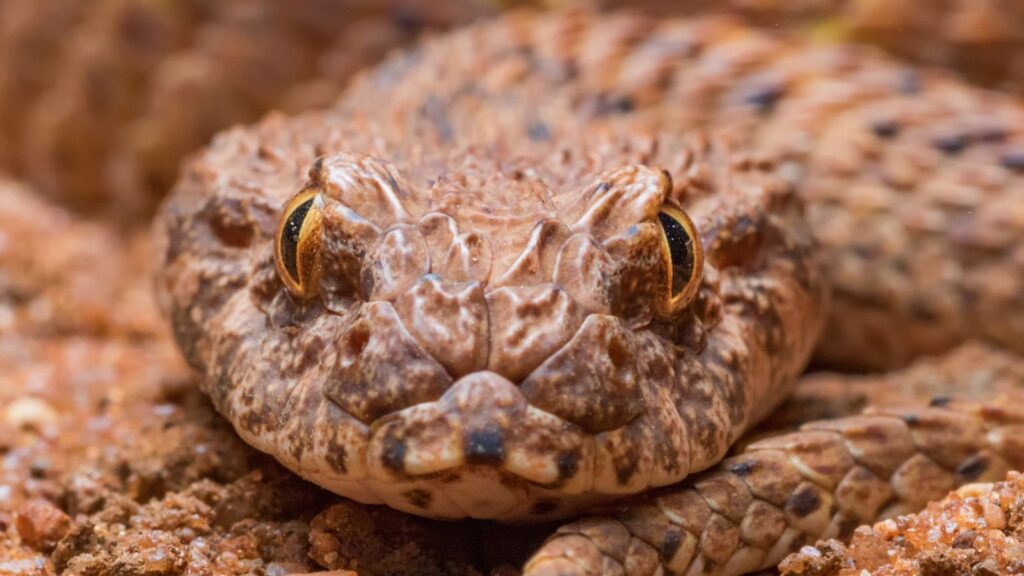Snakes are some of the most fascinating and feared creatures out there. Among the thousands of snake species slithering around the planet, a few stand out for their potent venom. These are the 21 most venomous snakes you can find (or avoid) around the world.
Inland Taipan
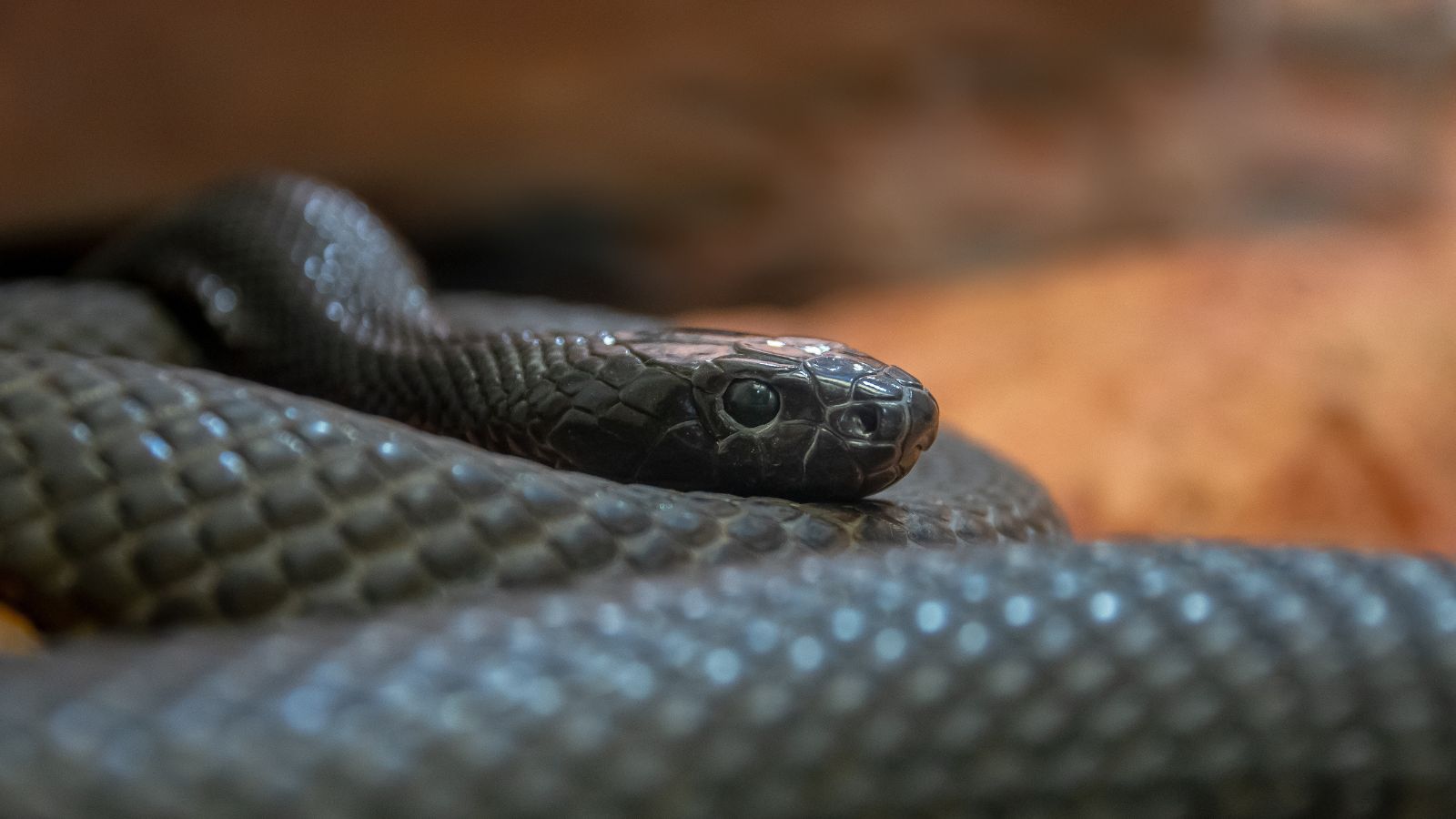
Known as the “fierce snake” or “small-scaled snake,” the Inland Taipan holds the crown for “the world’s most venomous snake,” according to the Australian Museum. Found in the arid regions of central Australia, its venom is a powerful mix of neurotoxins, hemotoxins, and myotoxins, capable of killing a human in under an hour.
Eastern Brown Snake
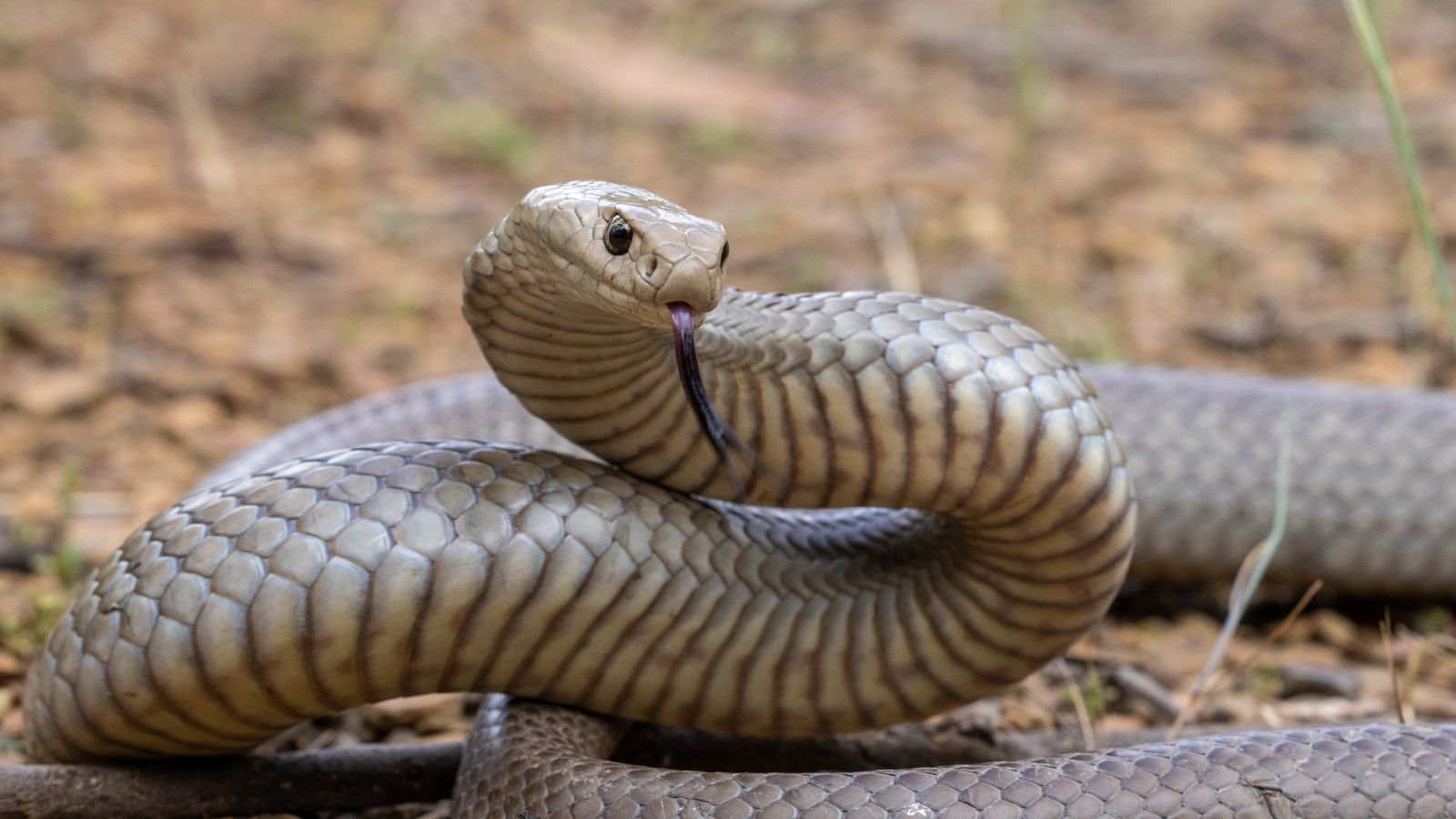
The Eastern Brown Snake, native to Australia, is infamous for its speed, aggression, and deadly venom and is responsible for more fatalities in Australia than any other snake. Its venom causes progressive paralysis and uncontrollable bleeding. Found in a variety of habitats, from forests to urban areas, this snake is highly adaptable.
Coastal Taipan
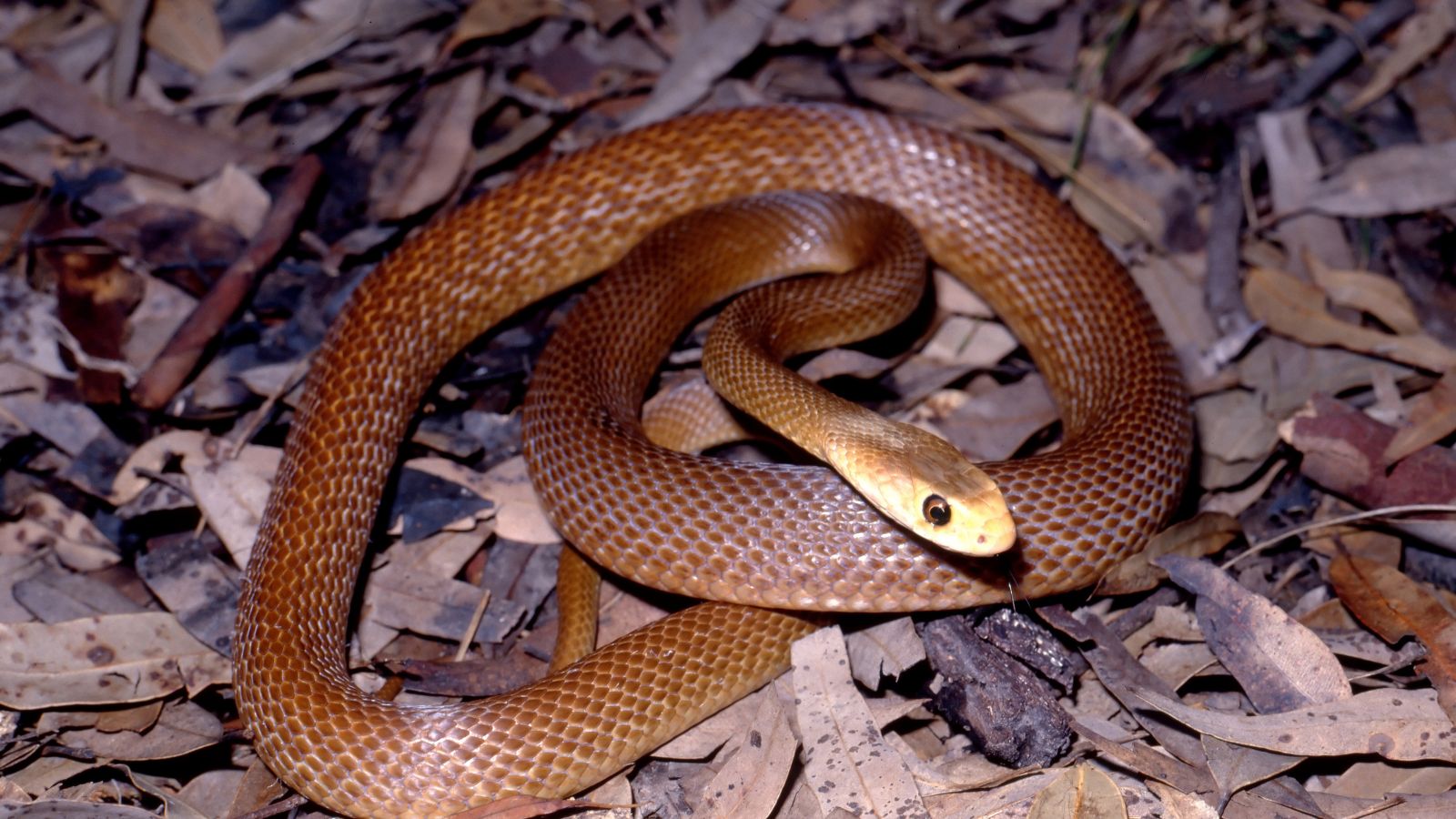
Another Australian native with a fearsome reputation is the Coastal Taipan or common Taipan. Its venom is one of the most toxic of any snake. It delivers a large quantity in a single bite and is highly agile, striking with precision. Found along Australia’s northern and eastern coasts, it inhabits a range of environments, including rainforests.
Black Mamba
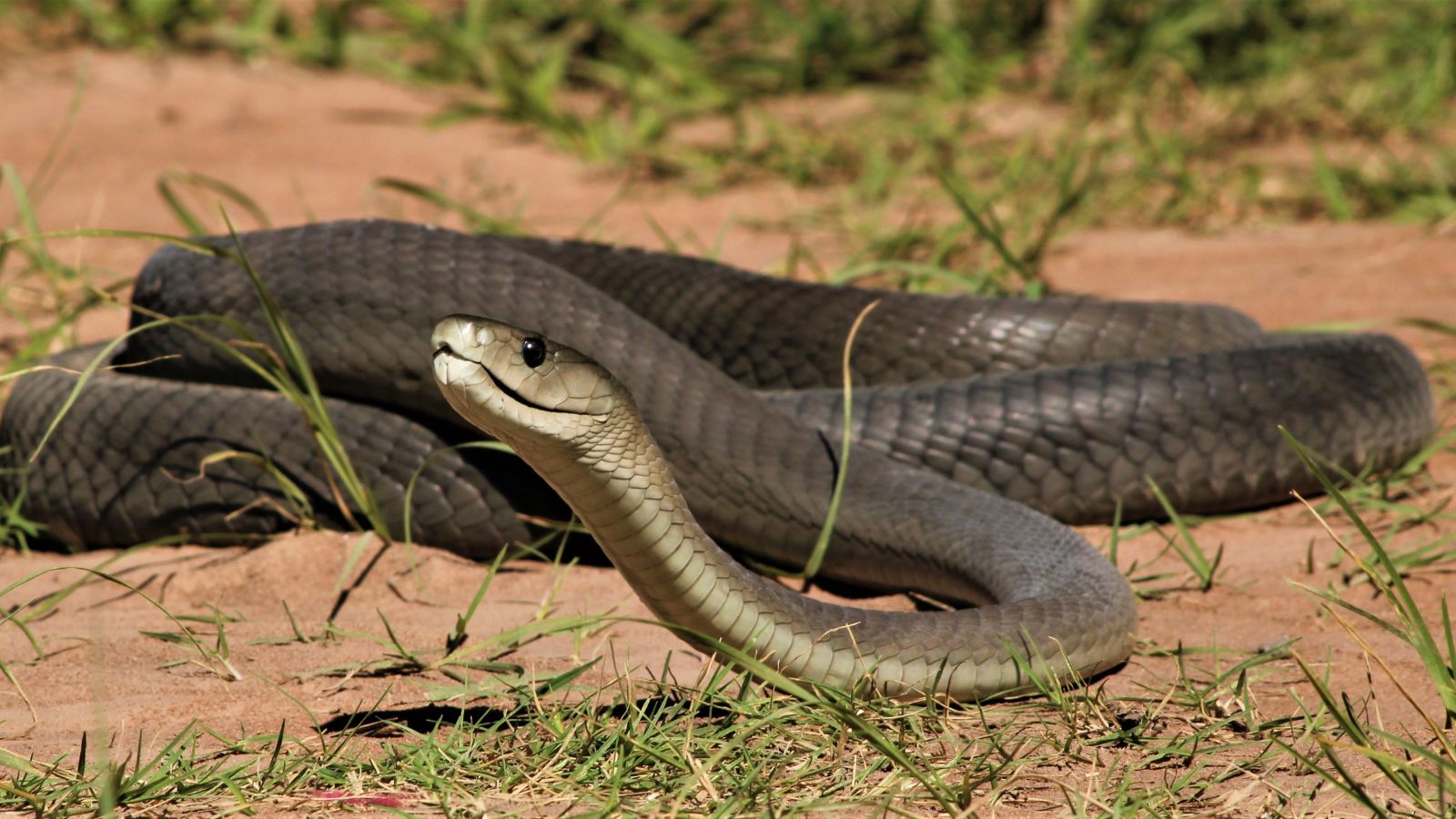
Africa’s most feared snake—and for good reason—is the Black Mamba. Known for its incredible speed, reaching up to 20 kilometres per hour, this snake is highly aggressive when threatened. Its venom is a potent neurotoxin that can cause death within hours if untreated.
King Cobra
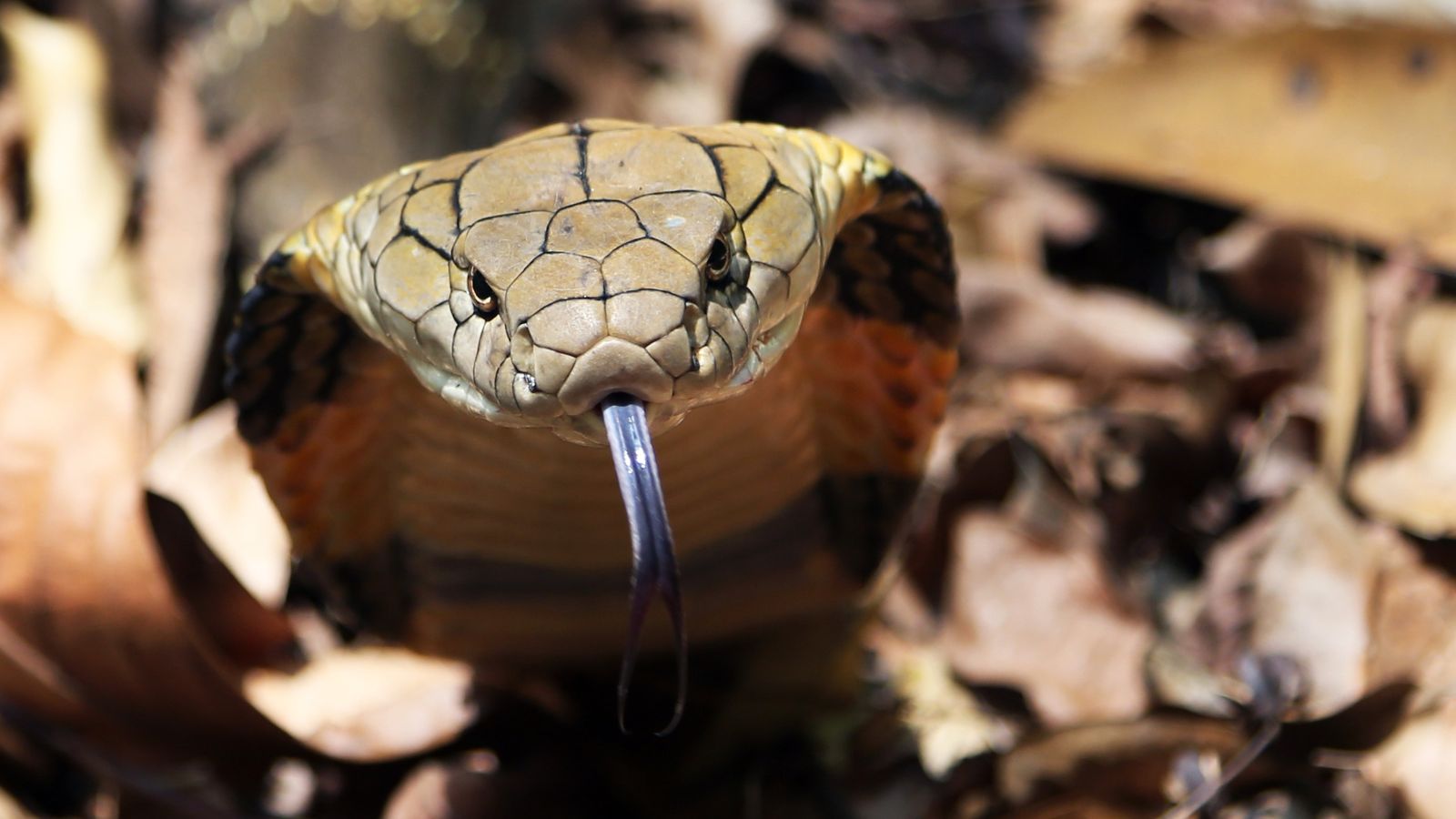
The King Cobra, the world’s longest venomous snake, can grow up to 5.5 metres in length. Found in India and Southeast Asia, its venom is powerful enough to kill an elephant. This snake is highly intelligent and has a more complex social structure compared to other species. While it primarily feeds on other snakes, it will not hesitate to defend itself against larger threats—including humans.
Tiger Snake
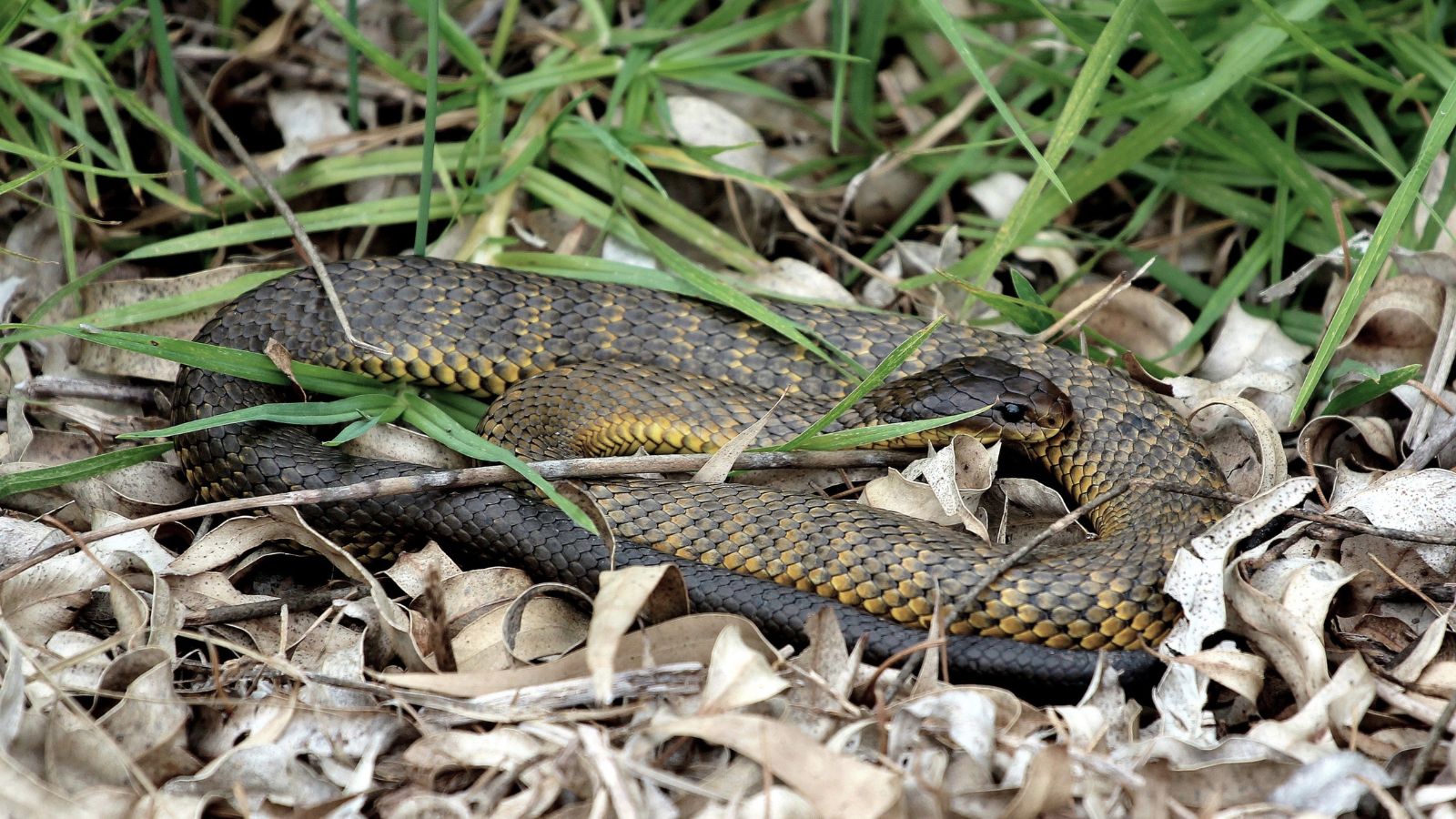
Found in southern regions of Australia, the Tiger Snake is easily recognisable by its banded pattern. Its venom contains potent neurotoxins, which can cause paralysis, bleeding, and muscle damage. This snake is highly variable in colour and pattern, adapting to different environments, from wetlands to grasslands.
Philippine Cobra
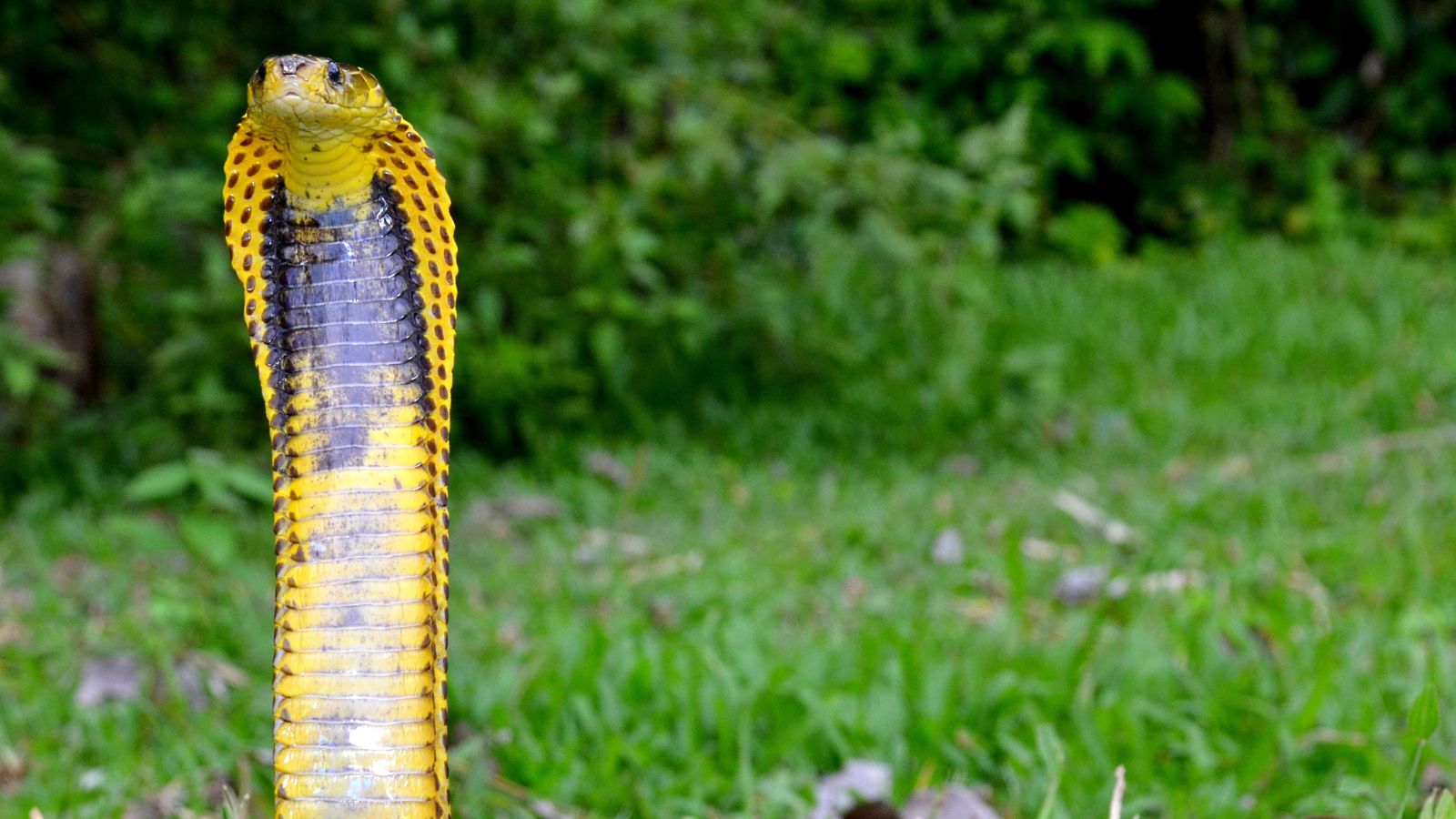
The Philippine Cobra from the northern regions of the Philippines has a reputation for being particularly dangerous due to its ability to spit venom. This venom can cause respiratory failure within half an hour. Unlike some cobras, the Philippine Cobra has a relatively short hood but compensates with its deadly accuracy.
Russell’s Viper
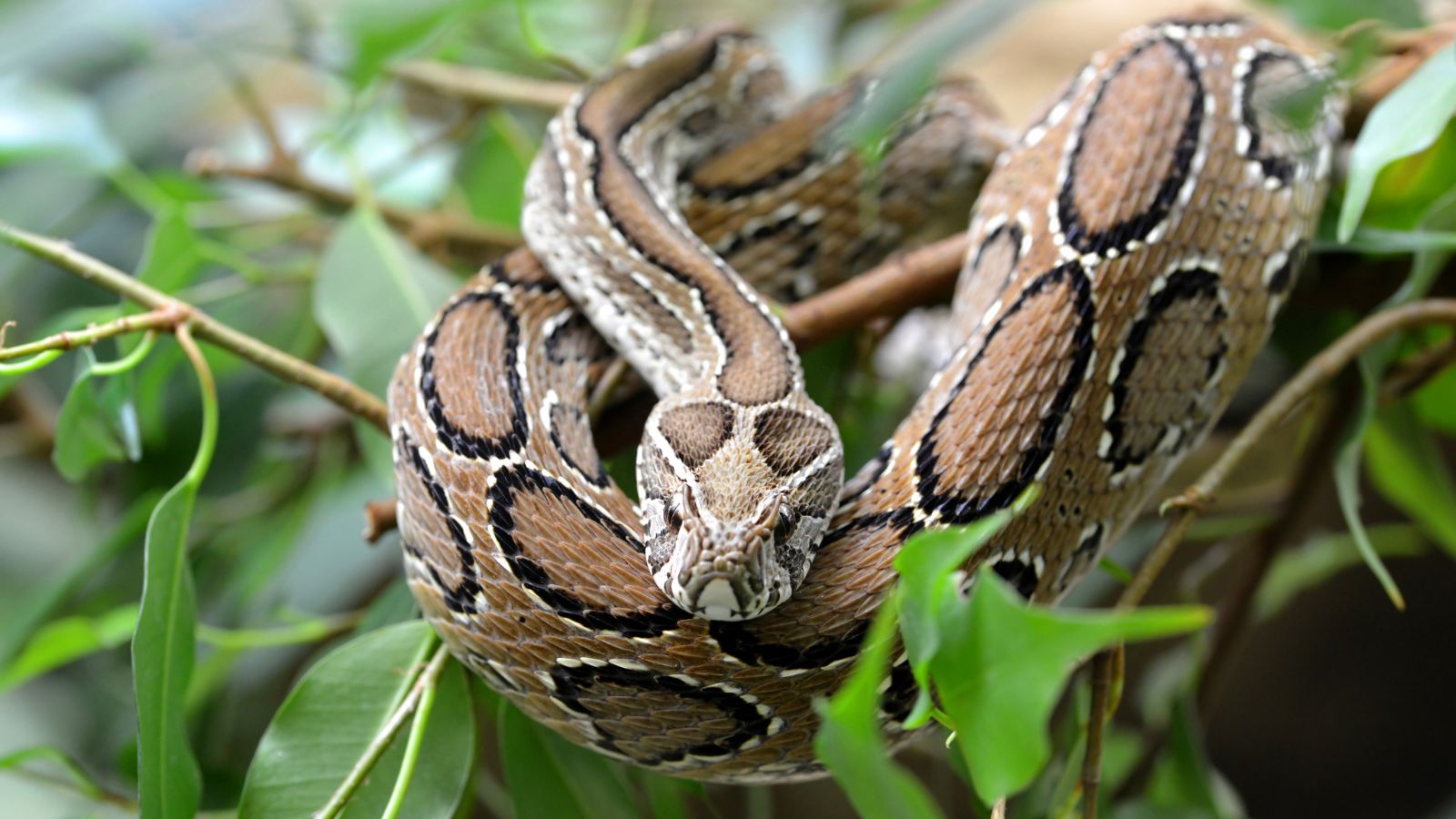
One of the deadliest snakes in Asia, responsible for more snakebite incidents than any other species in India and Southeast Asia, the Russell’s Viper has venom that is a complex mix of toxins. These toxins can often result in unbearable pain, bleeding, organ failure, and even death.
Blue Krait
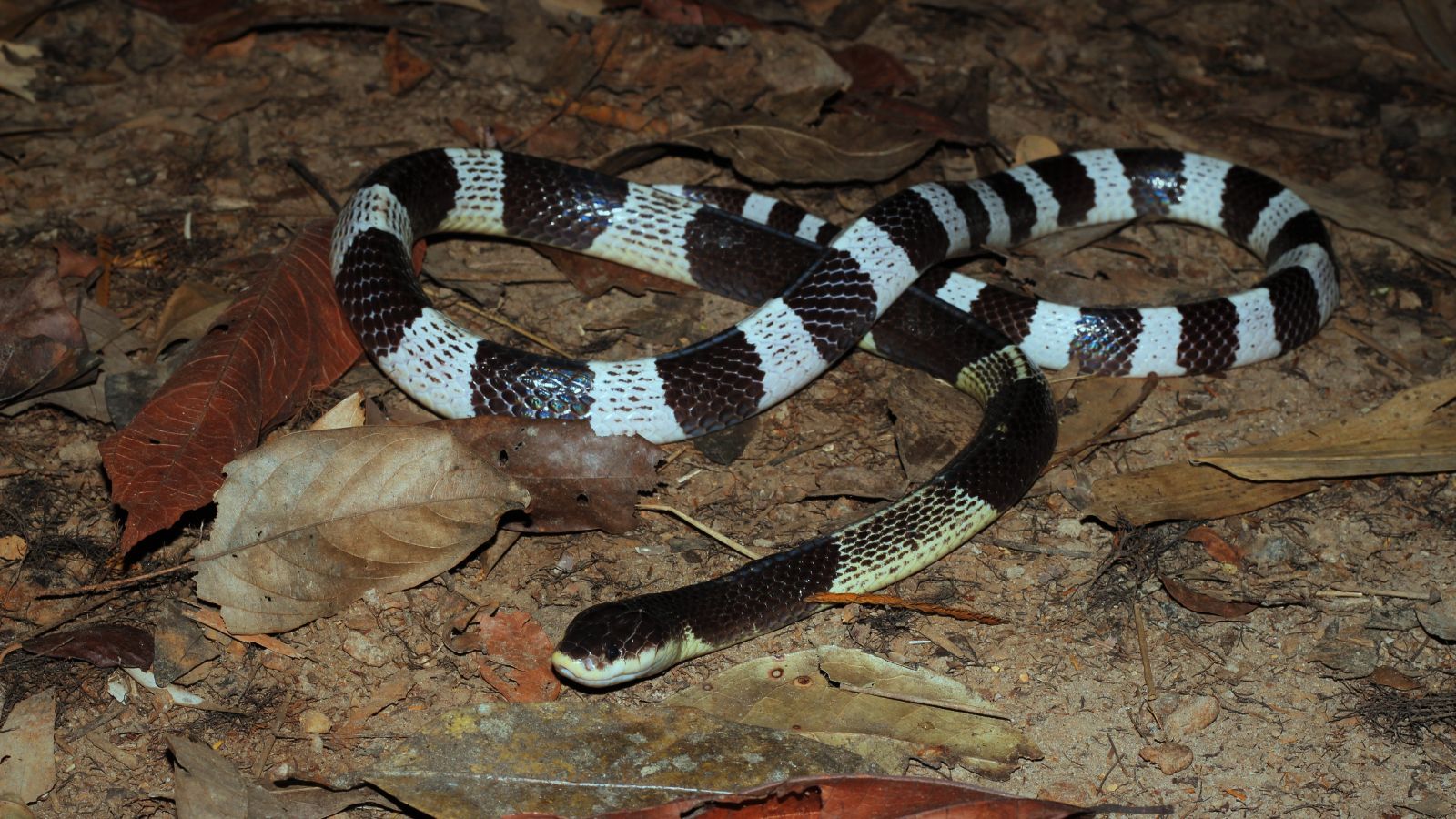
The Blue Krait, also known as the Malayan Krait, is one of the most venomous snakes in Southeast Asia. Its venom is highly neurotoxic, causing paralysis and respiratory failure. This snake is nocturnal and prefers to stay hidden during the day, emerging at night to hunt. It has a distinctive appearance with alternating bands of blue-black and white.
Death Adder
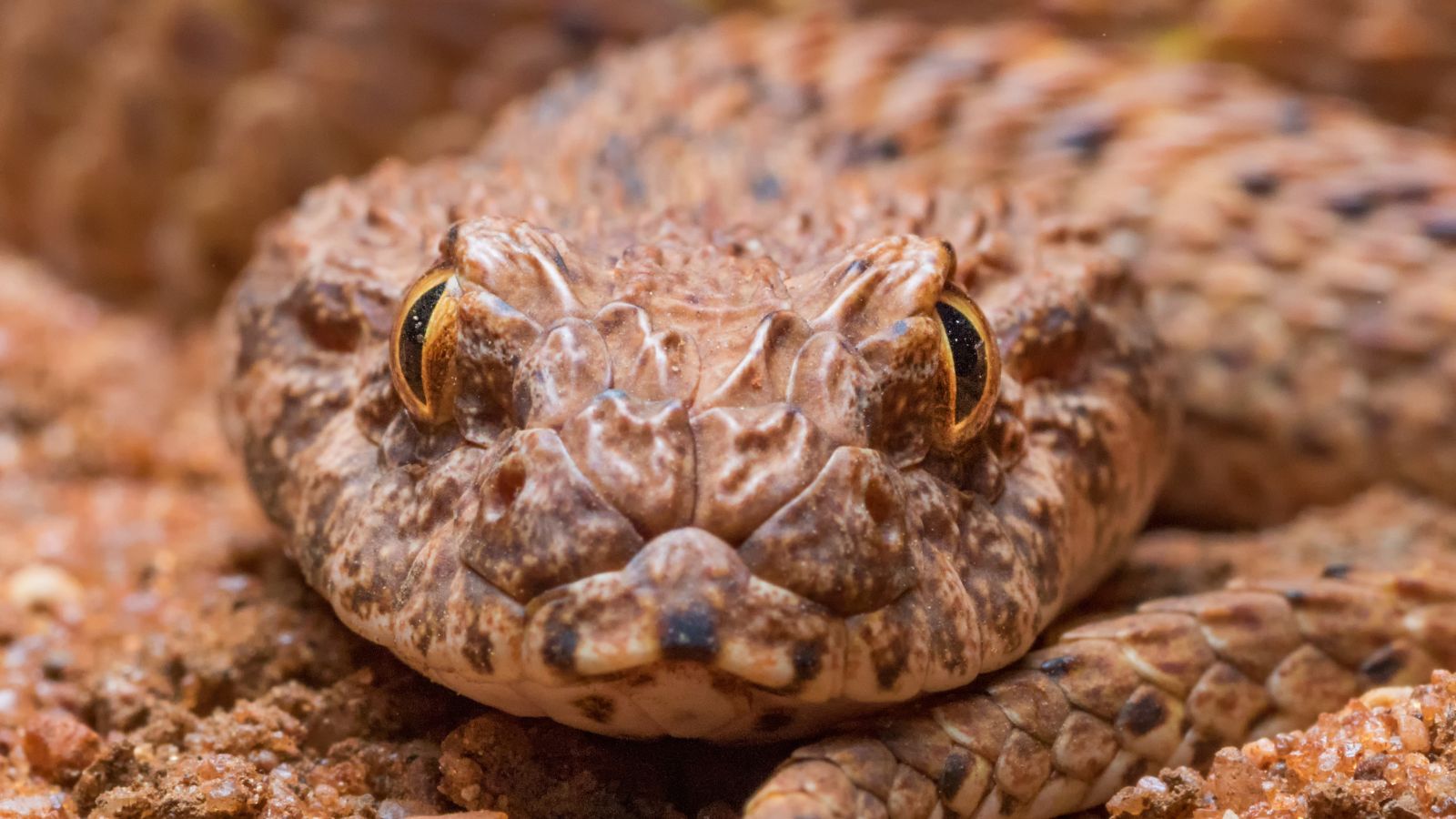
Despite its menacing name, the Death Adder is relatively small compared to some of the other snakes on this list. Found in Australia and New Guinea, it has a highly potent venom that can cause paralysis and death within six hours if untreated. It is an ambush predator, relying on its camouflage to blend into its surroundings while waiting for prey.
Puff Adder
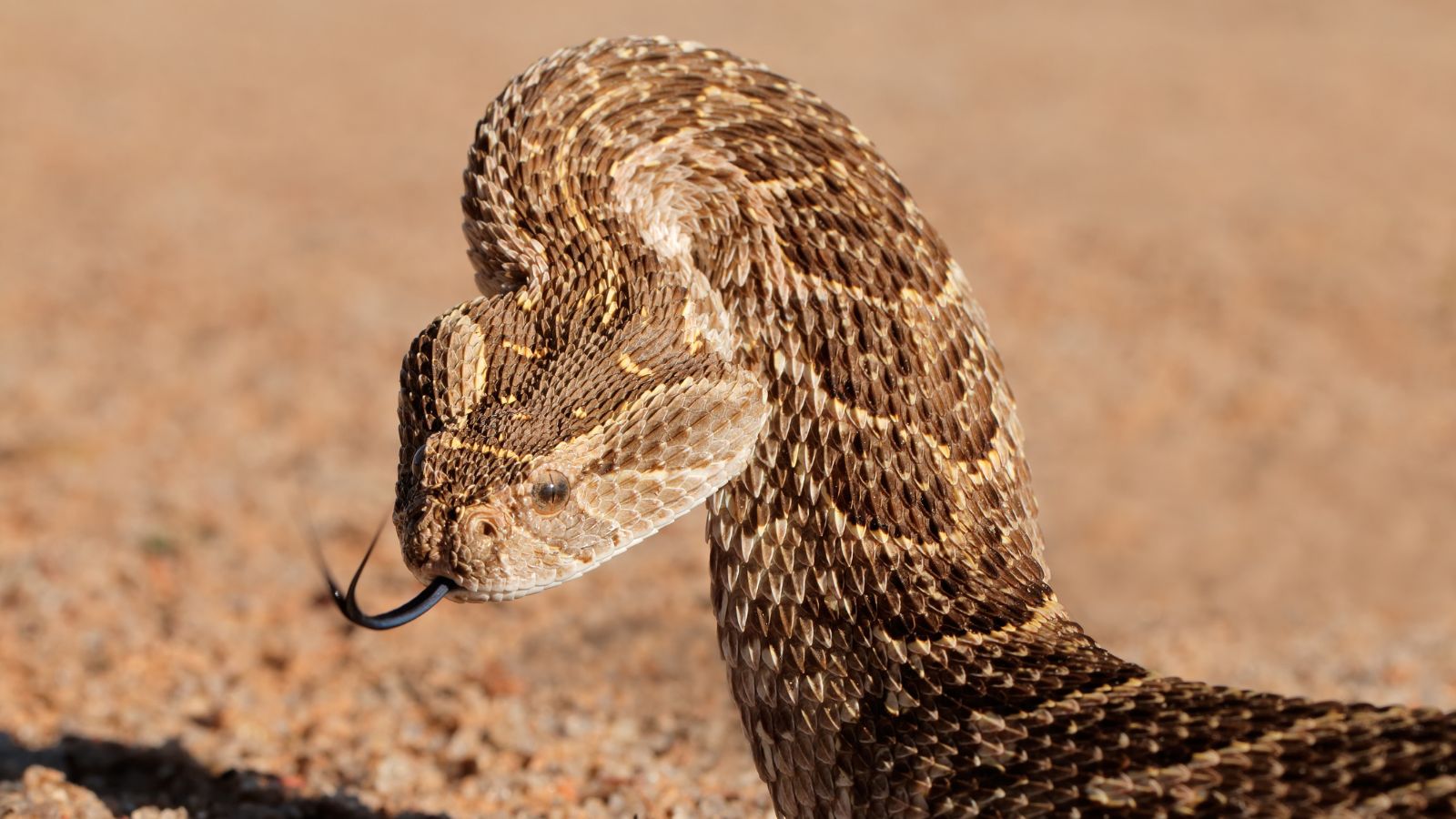
The Puff Adder is responsible for more snakebite fatalities in Africa than any other snake. It is widely distributed across the continent and is highly adaptable, thriving in a range of environments from savannahs to forests. Powerful cytotoxins in its venom can cause severe tissue damage and can be fatal if not treated promptly.
Mojave Rattlesnake
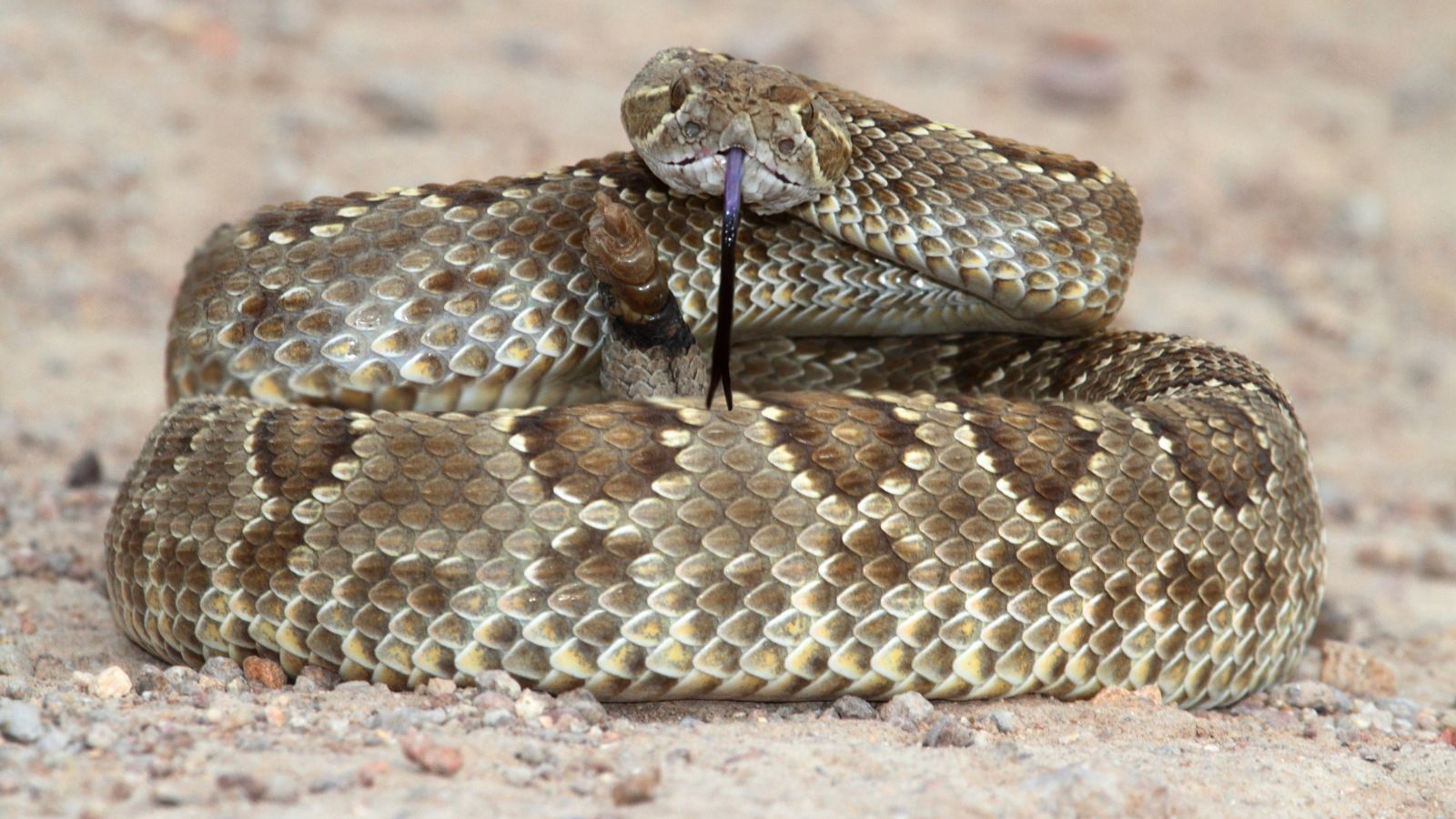
Found in the deserts of the southwestern United States and northern Mexico, the Mojave Rattlesnake has one of the most toxic venoms of any rattlesnake. Its venom is a potent mix of neurotoxins and hemotoxins, causing paralysis and internal bleeding. Recognisable by its distinctive rattle, this snake is both feared and respected in its native range.
Boomslang

The Boomslang, a tree-dwelling snake found in sub-Saharan Africa, has a venom that is highly toxic despite its small size. Its haemotoxic venom affects the blood’s ability to clot, leading to severe internal and external bleeding. This snake is shy and elusive, spending most of its time in trees where it hunts birds and small mammals.
Banded Krait
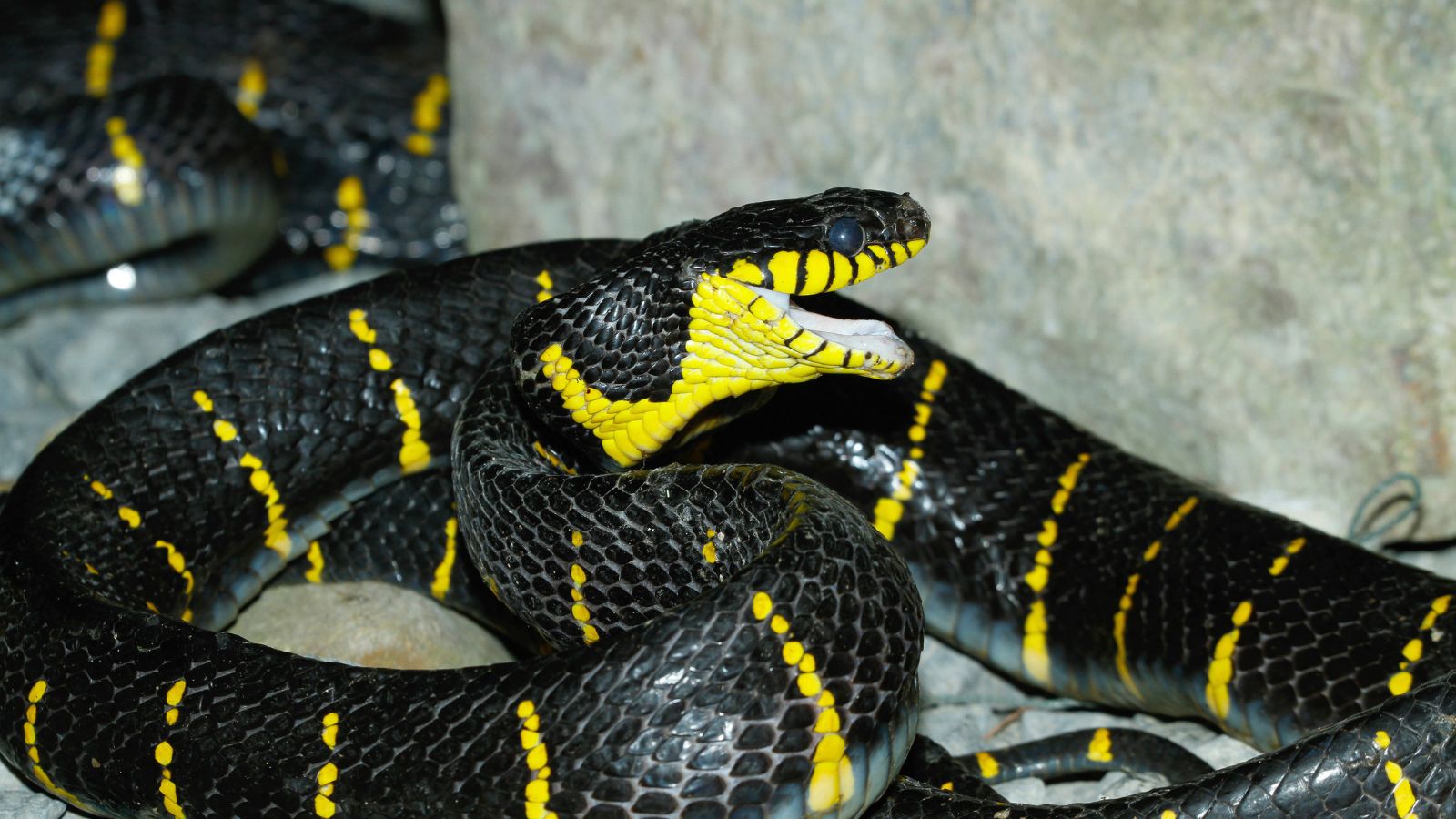
South and Southeast Asia is home to the Banded Krait, with a reputation for its striking black and yellow bands and highly neurotoxic venom-causing paralysis and respiratory failure. Despite its potent venom, the Banded Krait is generally docile and rarely aggressive towards humans. However, its bite can be deadly if not treated quickly.
Saw-Scaled Viper
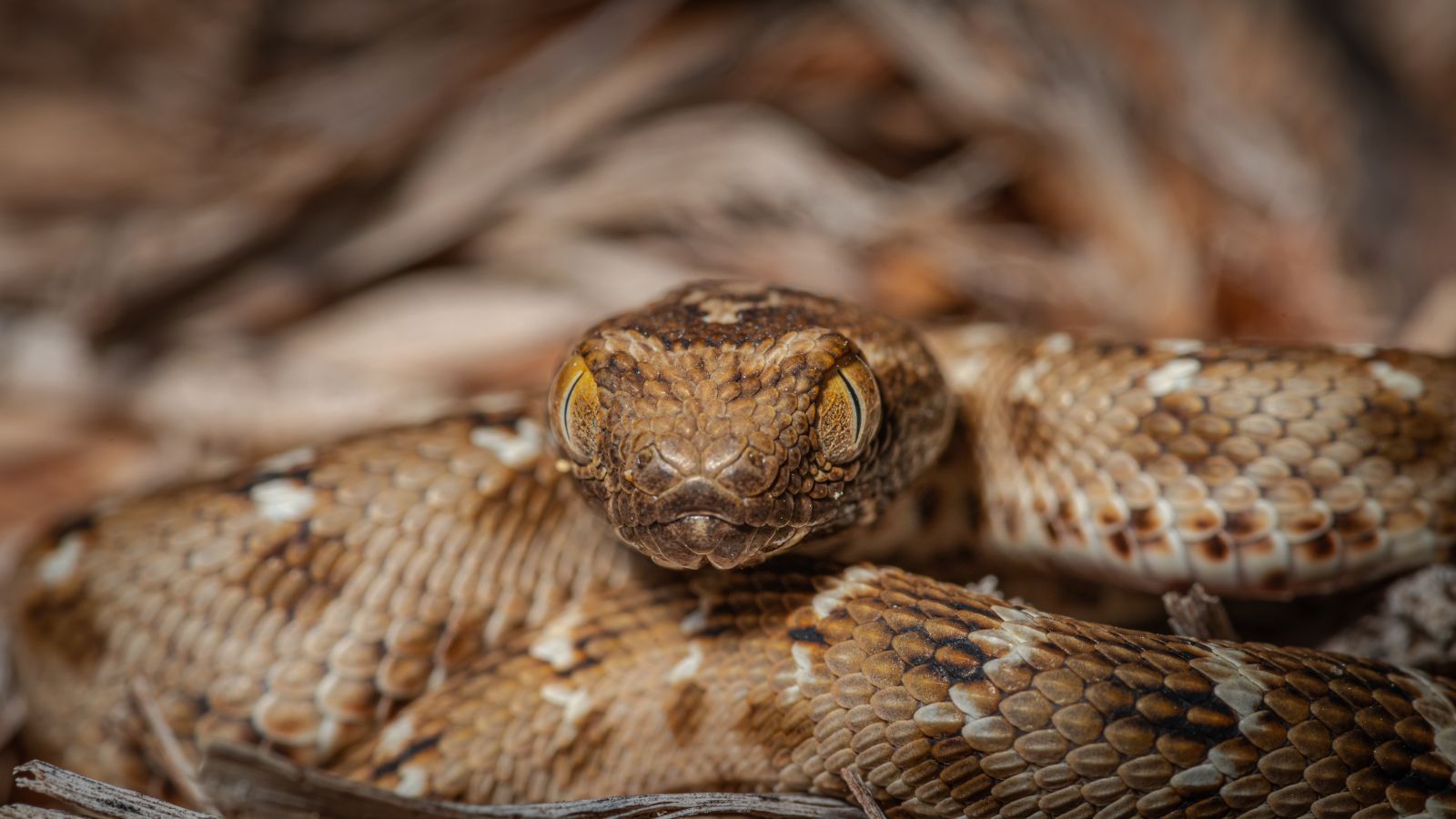
The Saw-Scaled Viper, found in parts of Africa, the Middle East, and South Asia, is responsible for more human deaths than any other snake. This small but highly aggressive snake will strike repeatedly if threatened. Its venom contains a complex mix of toxins, resulting in severe pain, swelling, bleeding, and tissue damage.
Coral Snake
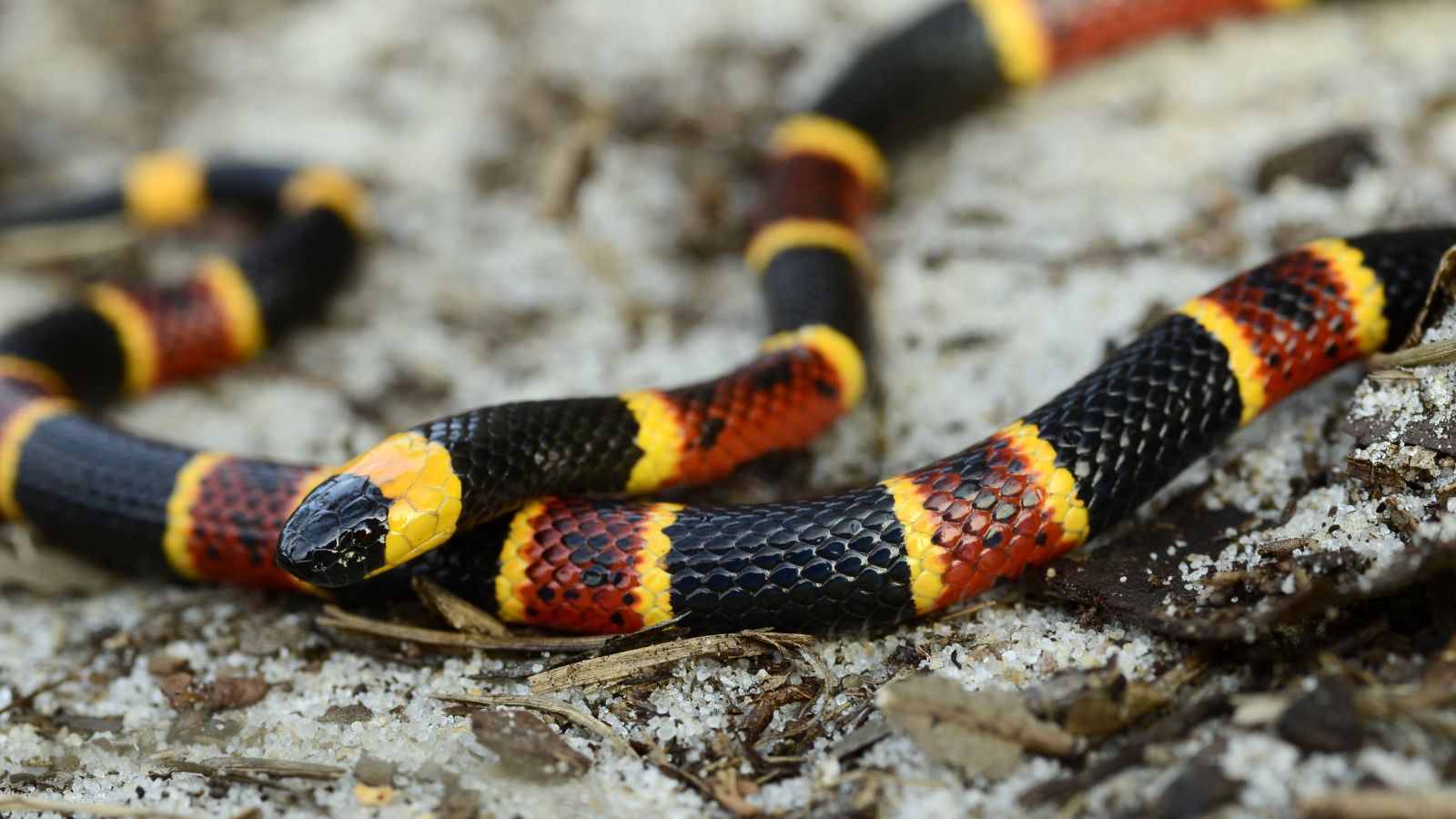
Coral Snakes, known for their bright red, yellow, and black bands, are found in the Americas. Several species exist, each with its own distinctive pattern. The saying “Red touch yellow, kill a fellow; red touch black, friend of Jack” is often used to distinguish them from non-venomous look-alikes.
Common Krait
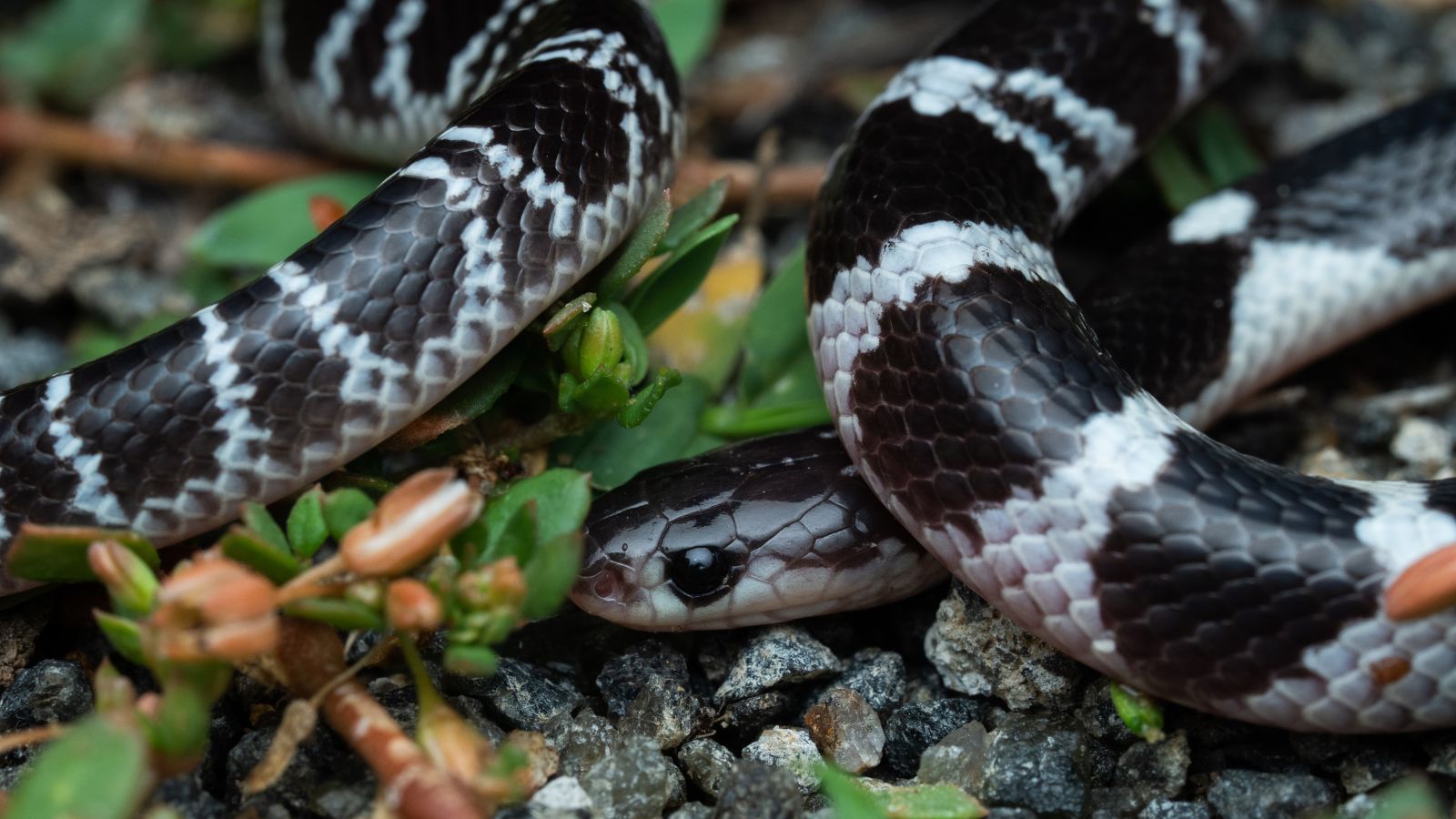
The Common Krait is highly venomous and responsible for many snakebite deaths in its range. This snake is nocturnal and tends to be more active during the rainy season when it enters human dwellings in search of food. The Common Krait is found in the Indian subcontinent and is generally shy, avoiding confrontation, but it can be aggressive if provoked.
Fer-de-Lance
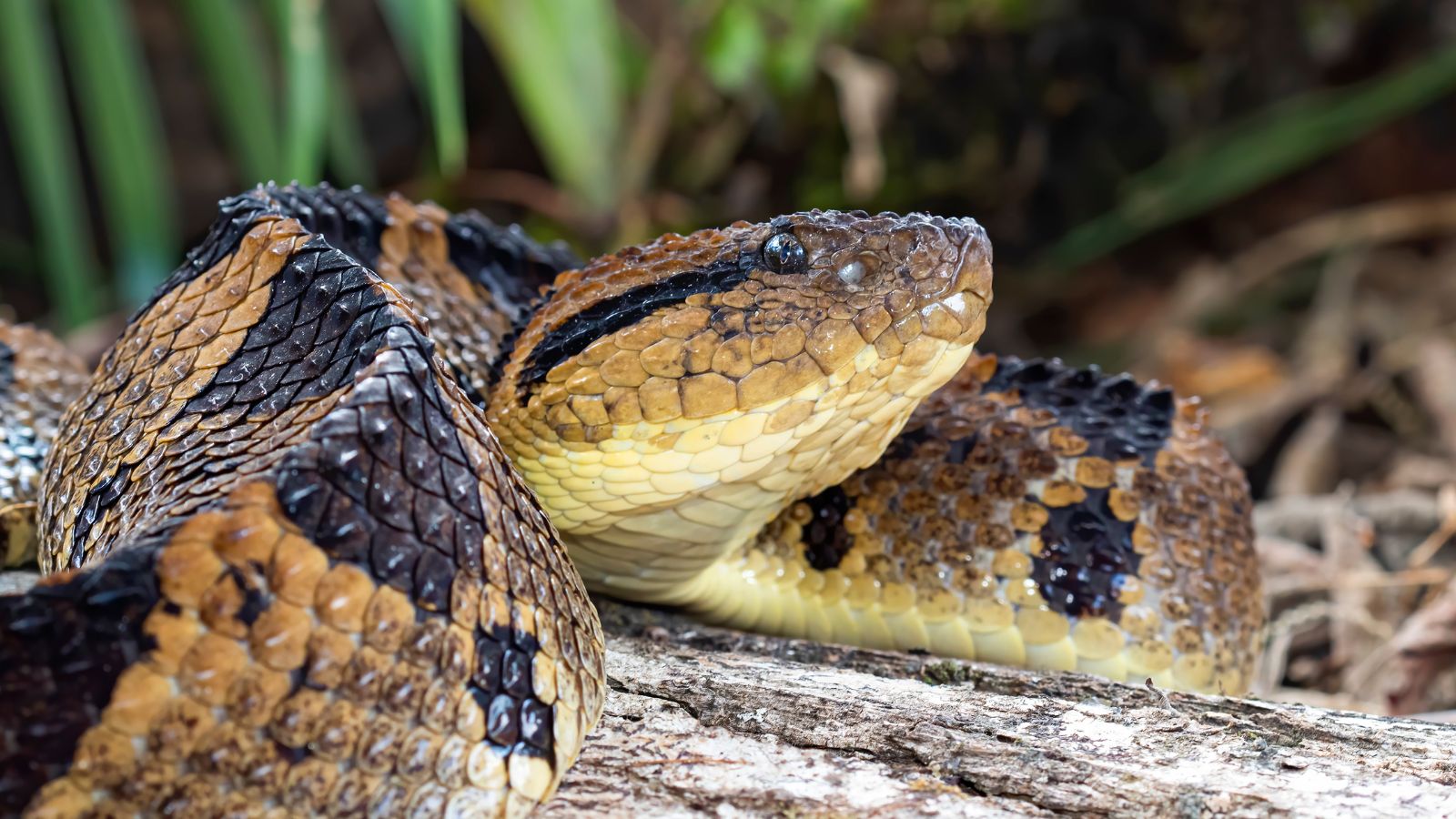
Also named the Bothrops, the Fer-de-Lance is one of the most dangerous snakes in Central and South America, thanks to its venom, which contains hemotoxins that are agonising, causing swelling, tissue damage, and bleeding. This snake is highly aggressive and responsible for many snake bite incidents in its range.
Malayan Pit Viper
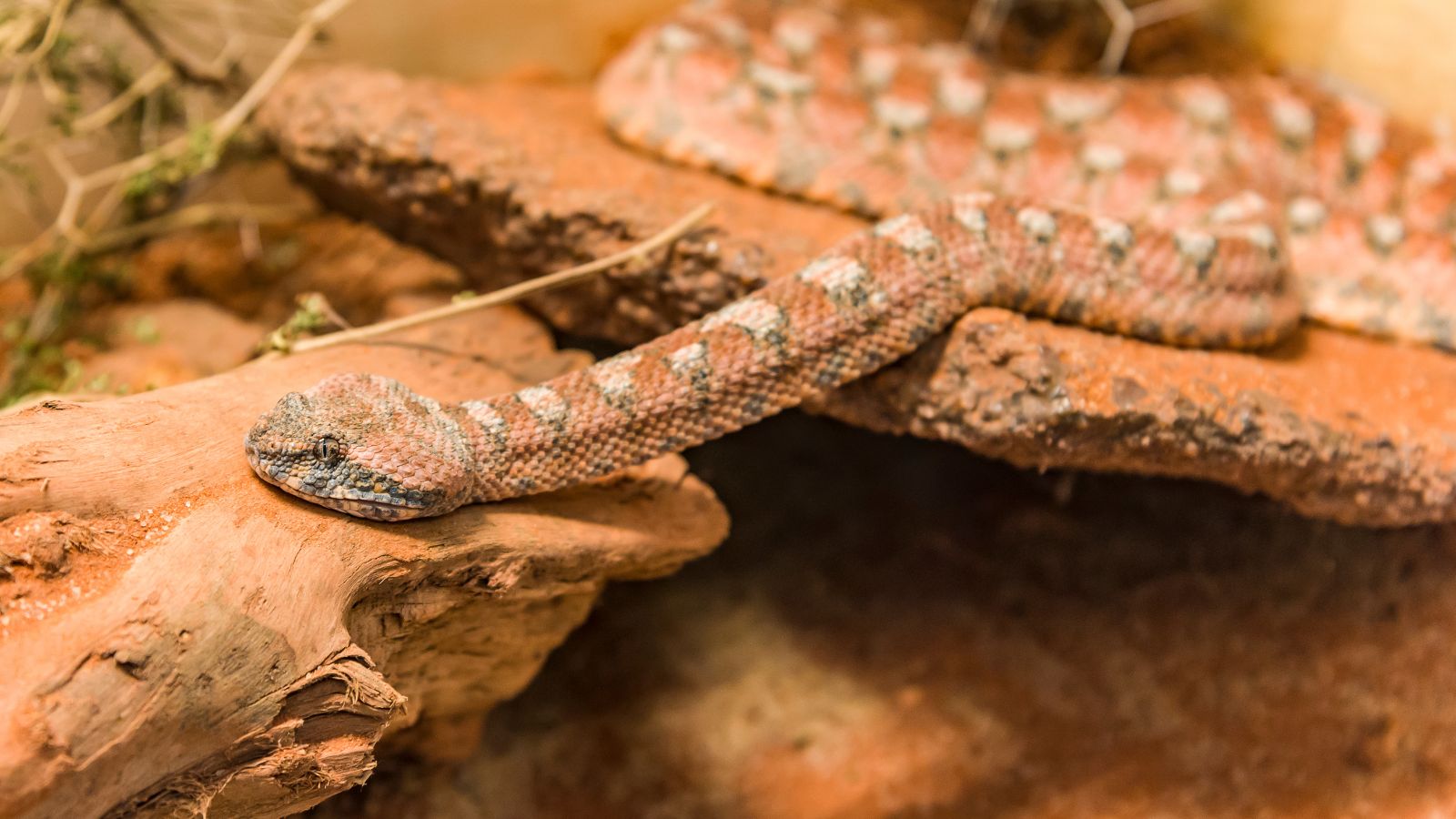
The Malayan Pit Viper has a venom that causes severe pain, swelling, and tissue damage, as it contains a mix of hemotoxins and cytotoxins that can be fatal if not treated. This snake is generally slow-moving but can strike quickly if threatened. It prefers to stay hidden in leaf litter and undergrowth in Southeast Asia, relying on its camouflage to ambush prey.
Belcher’s Sea Snake
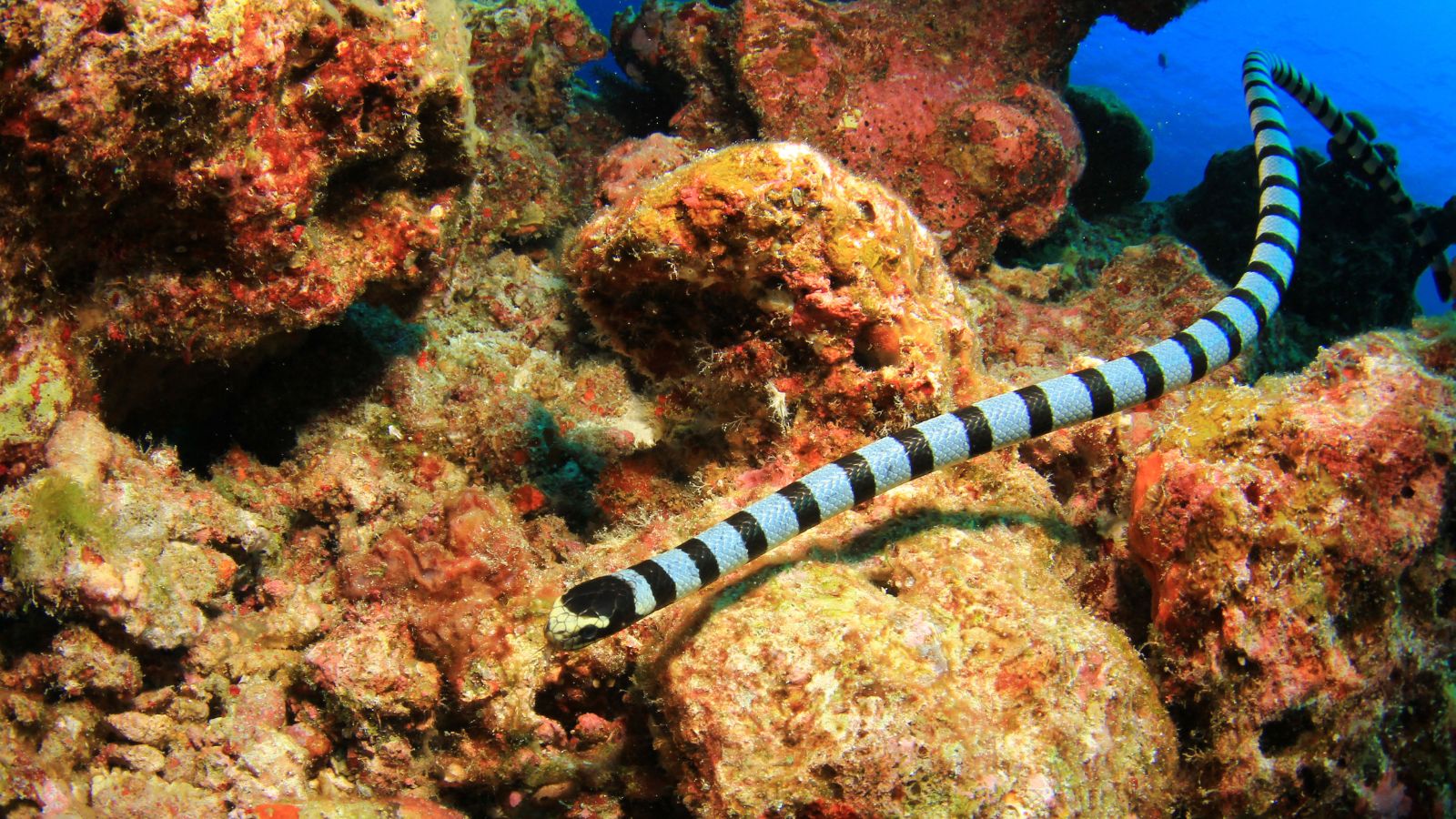
In the warm coastal waters of the Indian and Pacific Oceans you can find the Belcher’s Sea Snake, which is considered the most venomous sea snake of them all. Despite its deadly potential, this snake is generally docile and rarely bites humans. It feeds primarily on fish and eels, using its venom to immobilise its prey.
Dubois’ Sea Snake
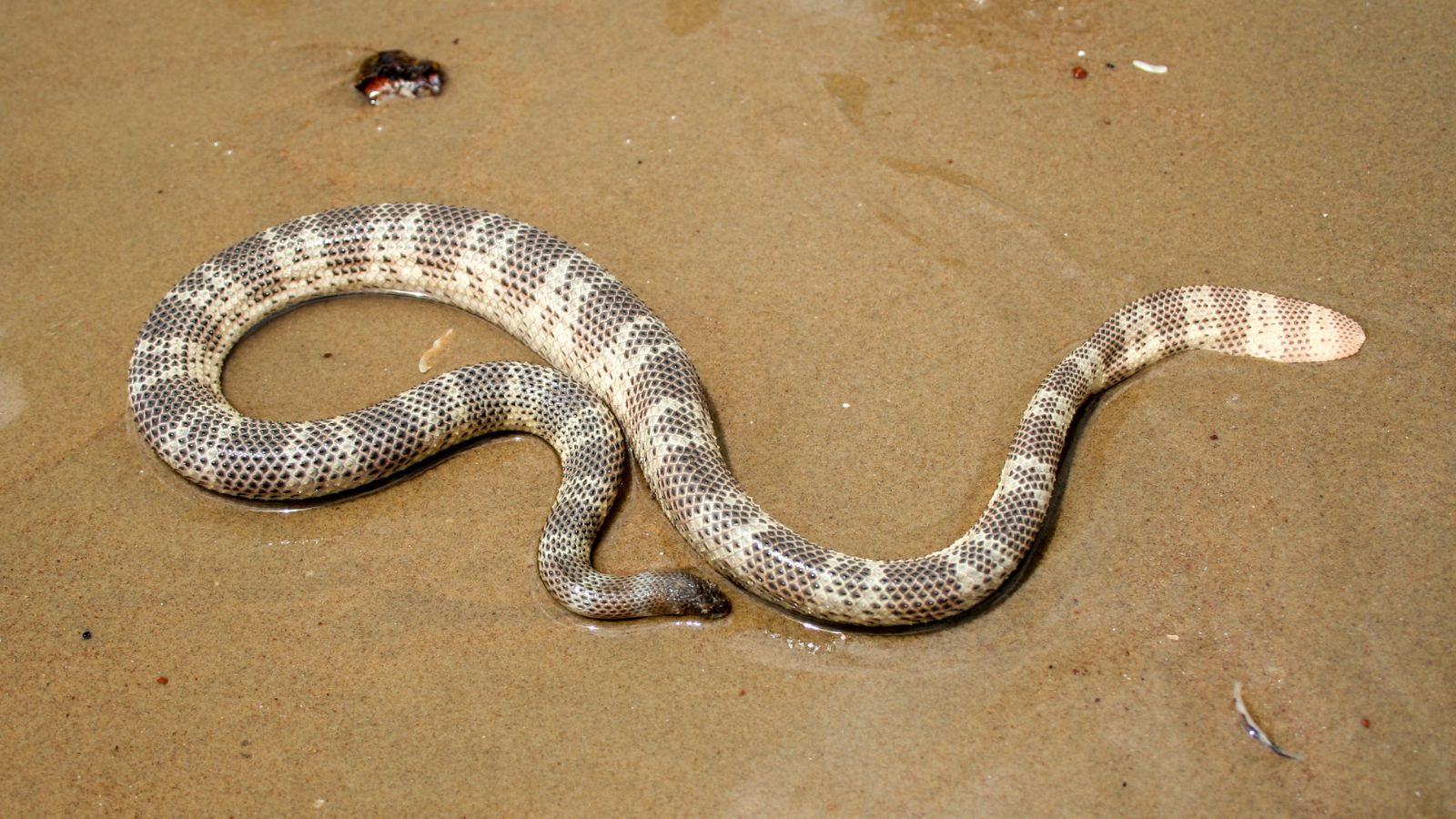
Our final venomous snake is the Dubois’ Sea Snake, found in the coral reefs of the Indo-Pacific region. Its venom is extremely potent. This snake is highly adapted to its aquatic environment, with a flattened tail that aids in swimming. Despite its deadly venom, the Dubois Sea Snake plays a crucial role in maintaining the balance of marine ecosystems.

